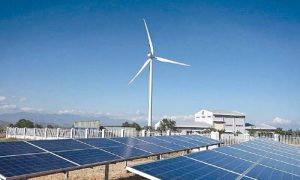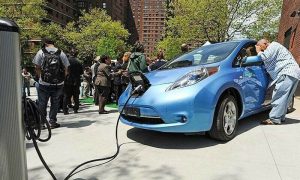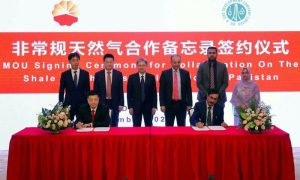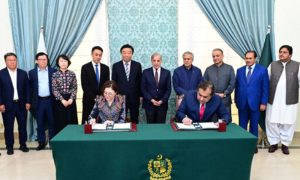HYDROELECTRIC power is the cheapest and cleanest form of energy. It is the most commonly used resource for generating renewable energy worldwide. However, Pakistan has miserably failed to harness this energy resource.
Ever since its creation in 1958, Water and Power Development Authority (WAPDA) has added only 7,116MW of hydropower, or a little less than a third of the country`s total generation capacity, to national grid despite an estimated resource of over 60,000MW.
Several factors – inter-provincial discord on mega water storage projects, corruption, lack of funding for hydropower projects etc, – have contributed to slow progress on hydropower generation. Moreover, the policymakers` obsession with Kalabagh dam also blocked hydropower development.
Almost all planned hydropower projects were put on the back burner after focus of country`s decision makers shifted in early 1990s, to thermal power generation based on imported oil, as a quick fix for electricity shortages, etc.
Consequently, according to NEPRA, power sector’s watchdog, energy market investments were caught in confusion. Most hydropower projects either could not move beyond early feasibility stage or faced cost overruns and time delays because of change in focus. Ghazi Barotha is the only major hydropower project that has been completed in decades.
Nonetheless, the rising prices of thermal electricity appear to have re-focused policymakers on harnessing the country`s hitherto untapped hydropower potential and increasing its share in energy mix to keep down the average cost of power generation.
According to the plan, government intends to add over 16,000MW of hydropower 10,997MW in public sector and 5,347MW in private sector to the system by 2024. At present only 3pc of hydropower generation or 214MW is owned by private companies.
`Today`s Pakistan faces twin problems of water and electricity scarcity. In case of electricity, we need more generation at affordable prices. Part of the solution for these issues lies in simultaneous development of new water storages and hydropower generation in the country,` Muzammil Hussain, WAPDA Chairman, told a reporter.
`We have wasted a lot of time. Out of 142MAF water (available under Indus Basin Treaty), we have a capacity to store only 15MAF or 10pc. Another 30MAF or 20pc, worth $15bn, is allowed to flow directly into the sea. As a consequence, we have become a water-stressed nation.
Same is the case with hydropower. We have harnessed only a fraction of potential resources (in over 55 years) despite it being the cheapest and cleanest source of renewable energy.
Ever since he took over WAPDA in August 2016, Muzammil Hussain has arranged to complete long delayed water and power projects like Tarbela Extension IV, Neelum Jhelum Hydropower Plant (NJHPP), etc. He also convinced the government to build Diamar Bhasha water reservoir from our own resources.
WAPDA will spend Rs100bn yearly for 7 years to build the reservoir. The money would be raised through loans and yearly federal government grants. Funding for power house would be easier after completing the water reservoir,` said WAPDA Chairman.
Similarly, he arranged Rs10bn in federal money to complete Kachhi Canal up to Dera Bugti by December 2016 to irrigate 72,000 acres. The project is facing cost and time overruns like most other WAPDA schemes. We will need another Rs. 45bn to complete the canal network that will irrigate another 100,000 acres in Balochistan beyond Dera Bugti. But we can wait for that.
Talking about hydropower projects, he said WAPDA will add over 2,600MW of hydropower to national grid by end of 2018 by completing long delayed NJHPP, Tarbela Extension IV and Golen Gol. Another 8,070MW capacity will be brought on line between 2020 and 2024 by completing Bhasha, Tarbela Extension V and Dasu projects.
He said projects like NJHPP, Tarbela Extension IV and Dasu had incurred cost overruns and delays because most of them were launched in haste without proper procedures, achieving financial close, setting work time and acquiring land.
At one time WAPDA was paying heavy fines to Dasu contractors as its contract was awarded two years late without acquiring land. Now, contractors face penalties as they haven`t brought in the needed equipment at site.
WAPDA cancelled a foreign contractor’s contract which had subcontracted its contract to another party against rules. This was the first (foreign) contract scrapped by WAPDA in the last 39 years. We have sent messages to contractors to mend their ways and have arranged Rs144bn funding from domestic banks.
Dasu is scheduled to produce 2,200MW in 2021 and another 2,200MW in 2024, said Chairman WAPDA. He said he was ensuring that that no future contract is awarded without financial close and a concrete timeline.
Neelum Jhelum, launched 14 years back, was scheduled to be completed in four years for Rs84bn. But since financial close was not achieved and no timelines were decided, the project`s cost has escalated to over Rs500bn (making it one of the most expensive hydropower projects in the world).
Similarly, in case of Tarbela Extension IV, there was no coordinated schedule of work completion. Manufacturing of the main inlet valve (MIV), a critical equipment to complete intake structure, was pending for two years. The issues have been addressed and WAPDA timeline shows that the first 460MW unit would become operational by end 2017 and the remaining two high water flow in 2018. Systems have been developed at WAPDA to ensure that no project in future meets this fate, claimed WAPDA Chairman.








